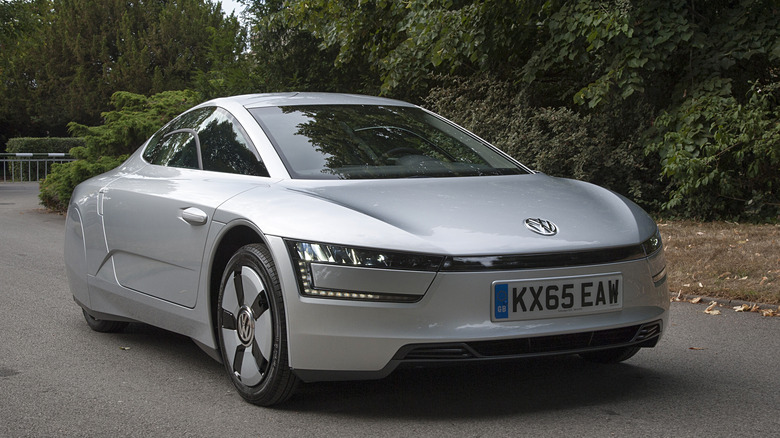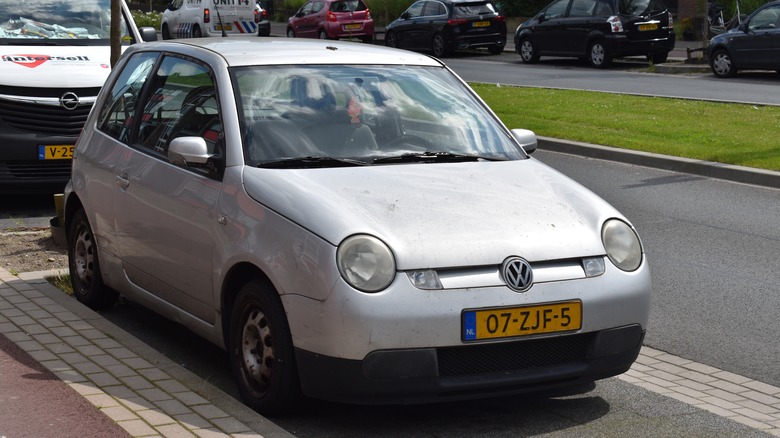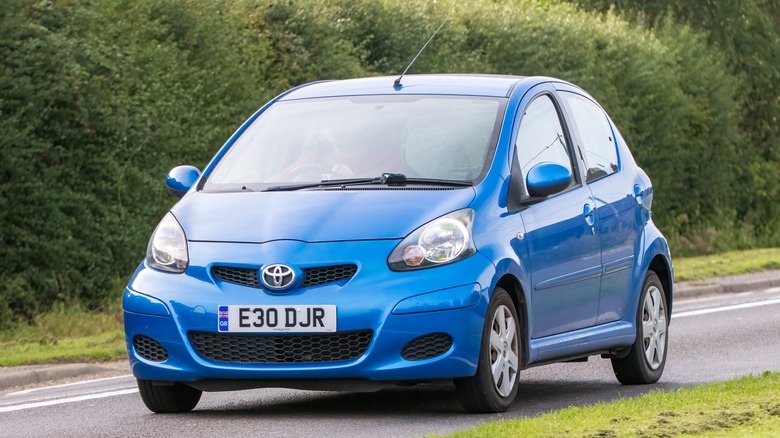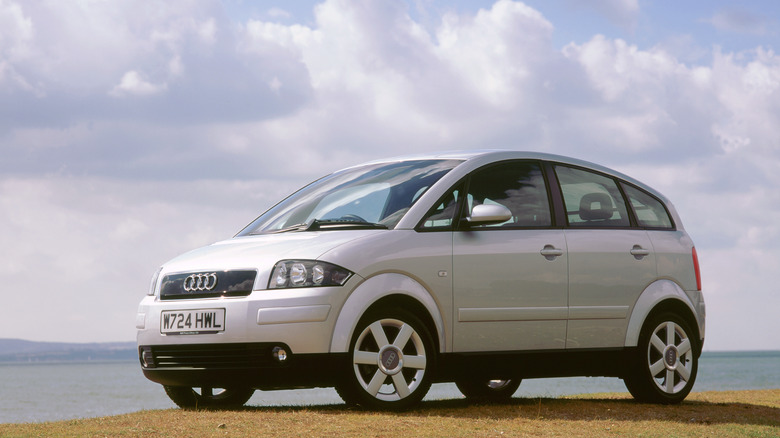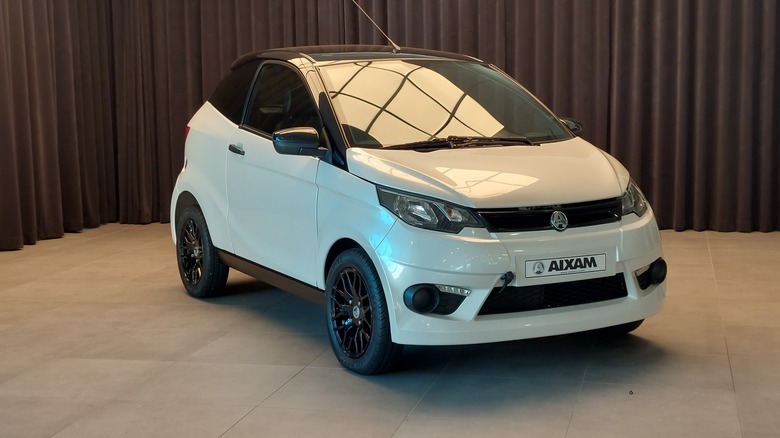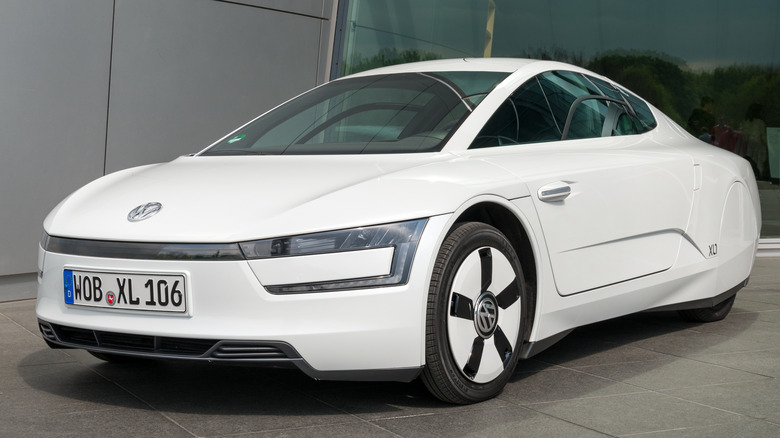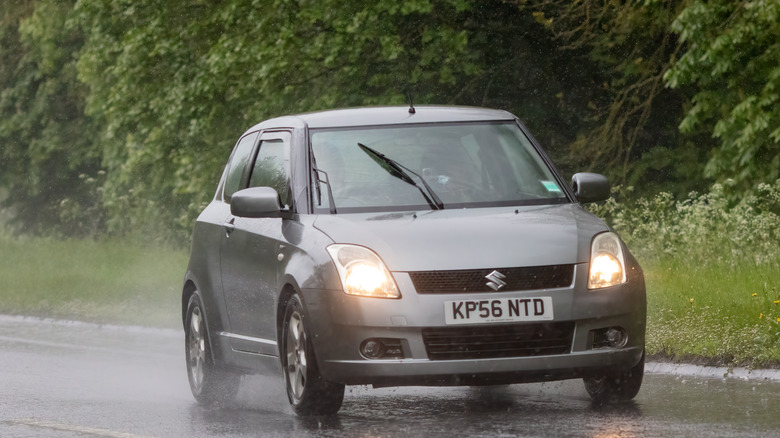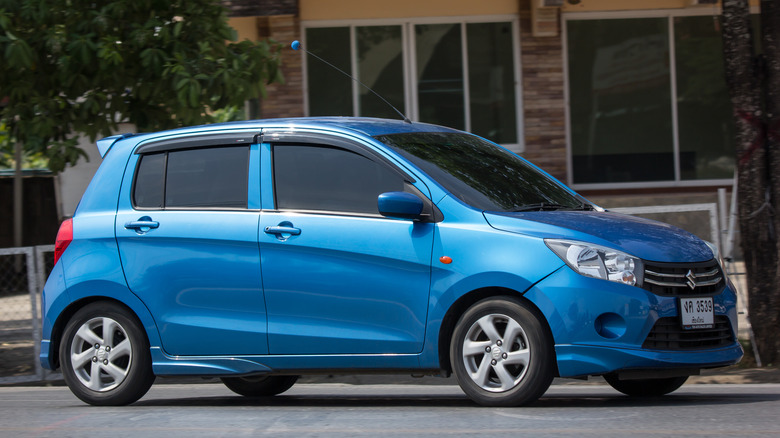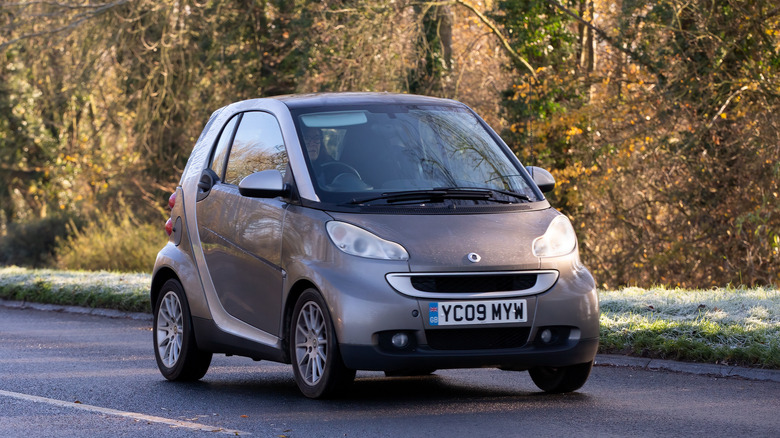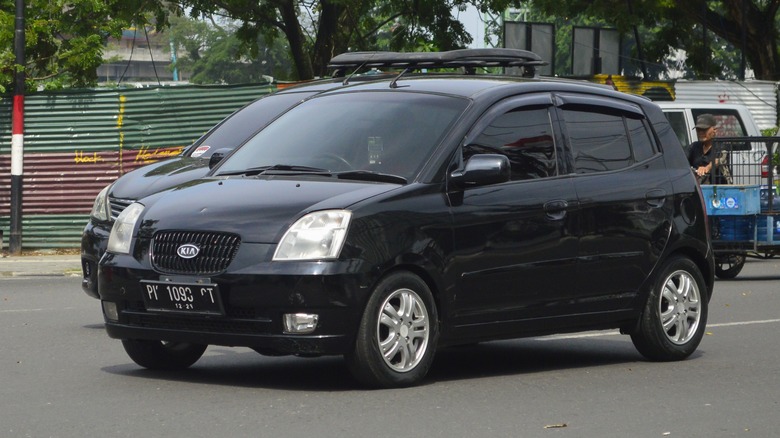10 Bizarre Diesel-Powered Cars Everyone Forgot About
In the late 1800s, Rudolf Diesel invented a namesake internal combustion engine that used compression rather than sparks to realize the internal combustion process. The diesel engine would change the automotive landscape significantly, as it became the de facto powertrain for larger, mostly commercial vehicles. This happened because of its versatile torque band and, thus, better capability for hauling large loads. Smaller diesel engines can also be found in some construction and agricultural vehicles.
Eventually, global automakers started putting diesel engines in regular cars, making use of another really important benefit of diesel engines: fuel economy. In the European market, this peaked in the 2000s, when just about every car on the market was powered by a diesel engine, fueling (pardon the pun) the belief that diesel is the fuel of the future. Of course, we know how that turned out.
Passats and other larger family cars were fairly well-suited to a diesel engine, but that wasn't the extent of it. Some of the smallest cars on the market were also offered with a diesel engine, where such a powertrain didn't belong. This resulted in some bizarre vehicles that few seem to remember.
Volkswagen Lupo 3L
While the Polo was VW's smallest model for the longest time, Wolfsburg opened up a spot in the lineup in 1998 for an even smaller vehicle. The Lupo arrived at just the right time when tiny city cars like the original Smart Fortwo were starting to cause a huge stir in Europe. The Lupo was a major hit, available only with three doors and featuring some cutesy, very un-VW styling.
As befits a tiny car, there was a lineup of small, efficient gasoline engines, and there was even a feisty Lupo GTI. However, VW was a huge believer in the diesel engine, which led to the creation of the Lupo 3L.
Under the hood was a tiny 1.2-liter three-pot diesel engine with a small turbocharger. It distributed the minute amount of grunt it had to the front wheels through a semi-automatic transmission. 3L refers to the amount of liters per 100 km of driving that VW promised the Lupo 3L would consume, which works out to just over 78 MPG. With several world records, the Lupo 3L proved that it could do even better.
Toyota Aygo
The next stage of the city car's evolution (and revolution) came along in 2005 when Toyota revealed the Aygo, a new take on the city car made in collaboration with the PSA Group. The PSA Group had its versions of the Aygo in the form of the Citroen C1 and Peugeot 107. The Aygo set out to change the world's perception of the city car through a surprising amount of practicality and a very smart approach to cost-cutting and efficiency.
As expected, most Aygos and their siblings were powered by a Toyota-built 1.0-liter I3, which didn't have much power and didn't use much fuel either. The collaboration with the PSA Group gave the Aygo another powertrain option. Toyota never really did tiny diesel engines, but the PSA Group were experts at them, which is why the Aygo and its siblings also offered a small 1.4-liter HDI turbodiesel.
Putting out 54 hp, it didn't exactly turn the Aygo into a speed demon, but its total lack of thirst for diesel made up for it in a roundabout way. Sadly, if not maintained properly, the HDI tends to stain the Aygo's otherwise pretty spotless reliability record, and most people end up going for the gasoline engine and skipping the diesel altogether.
Audi A2
At a glance, the Audi A2 is just a bizarre small Audi from the late 90s and early 2000s. Easily one of the strangest cars to come out of Ingolstadt. Some may even call it ugly. In hindsight, the A2 was a true revolution, and easily one of the most forward-thinking cars of the era. Audi pulled a lot of stops with the A2, and it didn't exactly spare the budget, which is one of the factors that ultimately lead to its downfall. The A2 was very expensive to buy for what it was, which is why a lot of people skipped out on it.
The unsightly bodywork is not bad design, it has a purpose. A purpose to be aerodynamic. Weight reduction was also a major focus point when the A2 was being designed, which ultimately led to the A2 being built upon an aluminum spaceframe. This allowed it to weigh less than 2,000 pounds, and equipped with the right powertrain, it led to some incredible fuel consumption figures.
Speaking of, you could have the A2 with two gas engines, and two tiny three-cylinder diesels not dissimilar to those of the VW Lupo. The smaller of the two displaced 1.2 liters, and it was necessary to achieve the very best fuel consumption figures, with almost 80 MPG possible. The most efficient A2 also had very space-age aero wheel covers, long before modern supercars made it cool.
Aixam Microcars
Yes, Microcar is in the name, but Aixam vehicles aren't really cars at all. Legally, they're called quadricycles in Europe, falling under the same legislation as everyone's favorite Citroen Ami. Indeed, before the Citroen Ami and its siblings, Aixam was one of the only ways that teenagers in Europe could drive without a license.
French manufacturer Aixam-Mega has made these cute little ATVs in car costumes since 1975. The original had three wheels and resembled a tuk-tuk, but things are different now. There are multiple style options to choose from, and the company has offered commercial versions and even convertibles for the longest time.
Every Aixam has a pretty similar powertrain. A two-cylinder diesel unit, otherwise reserved for construction equipment, puts out a maximum of around eight hp. There's a single forward and reverse gear, and the top speed is limited to 28 mph. Most modern Aixam models offer infotainment systems and stereos, but the crashy two-cylinder diesel is most of what you'll hear. Despite their inherent flaws, Aixams are a great choice for teenagers who don't want to take public transport, and their cuteness makes you forgive some of their flaws. It's just like having a pet.
Volkswagen XL1
Volkswagen spent the better part of the early 21st century convincing everyone that diesel really is the fuel of the future. It went above and beyond in that mission with the admittedly amazing XL1, oftentimes cited as the supercar of economy cars. While it was a concept initially, VW decided to put it into very limited production in 2013.
Every single aspect of the XL1 is designed to maximize fuel efficiency. For one thing, the chassis and nearly all the bodywork is carbon fiber reinforced plastic. The rear wheels are covered, it has cameras instead of mirrors, and the overall shape is designed to be as aerodynamic possible. This nets the XL1 a drag coefficient of Cd 0.189, which is lower than just about every modern electric car. Remember, this was more than 10 years ago.
Of course, the powertrain supplemented that. Under the rear engine cover sat a tiny 800cc two-cylinder diesel engine paired up with an electric motor, all of that sending power to the wheels through a 7-speed dual-clutch automatic transmission. Volkswagen promised the XL1 can cover 100 km of driving on a single liter of fuel, which works out to an incredible 235 MPG. Perhaps unsurprisingly, the XL1 went on to prove that it really was capable of such figures.
Suzuki Swift DDIS
The Suzuki Swift has earned its respect in global markets as one of the most competent subcompact car packages. It is peppy, fun to drive, practical, reliable, and very well-priced. Like most small cars from Japan, the Swift was available with a group of small, efficient gasoline engines. However, small cars with small diesel engines were very popular in Europe at the time, and Suzuki wanted to fit in.
Fiat was one of the biggest suppliers of small diesel engines back then, as its 1.3-liter Multijet turbodiesel found a home in many a small car throughout the 2000s. Suzuki would also end up shoehorning the 1.3 diesel into the Swift, resulting in the Swift DDIS. With a modest 72 hp and a good amount of torque, the Swift DDIS was fairly performant and very, very fuel efficient.
The 1.3 Multijet is also one of the more reliable engines from Fiat if maintained properly, but it didn't really strike a chord with most buyers. Most of them opted for the excellent gas engines in the Swift. Suzuki continued offering this tiny diesel in the succeeding generation, but after that, it was discontinued.
Microcar MC1
Aixam is not the only manufacturer of quadricycles in Europe that can be driven without a license. Ligier, of LeMans prototype and silhouette racer fame, also has an arm specializing in these little curiosities, aptly named Microcar.
The Microcar MC's concept is very similar to the Aixam vehicles. It is a tiny quadricycle masquerading as a car with a two-cylinder diesel engine that has pretty much no power and can only do around 28 mph. The construction is similar to the Smart Fortwo and stuff like the Think City. An alloy passenger cell, similar to Smart's Tridion, is the mounting point for the ABS plastic body panels. There was also a long-wheelbase cargo version of the MC.
All of it seems fine on paper, but as it turns out, the Microcar MC wasn't very good. It was unrefined, cheaply manufactured, noisy, and it didn't really make sense to buy one when you could get a similar experience in public buses, except you wouldn't be in the driver's seat. Ultimately, Ligier's microcars failed to make a major impact.
Suzuki Celerio
Hearing the name Suzuki tends to remind people of the same few familiar cars. The Sidekick, the Vitara, the Swift, and maybe the total flop was the Kizashi. Very few people remember or have heard of the Celerio, which is Suzuki's smallest vehicle designed primarily for emerging markets. It was a pretty major hit in markets like India and Eastern Europe, despite total brake failure rendering it unsafe.
Similar to certain countries in Eastern Europe, diesel is hugely popular in India, which is why Suzuki offered a super frugal diesel-powered Celerio in India. Under the hood was a tiny 0.8-liter two-cylinder diesel engine making a modest 49 hp. Speed wasn't really on Celerio's priority list, taking a very, very long time to reach 60 mph. However, it excelled at fuel economy.
Thanks to that tiny diesel engine, the Celerio could easily achieve 65 MPG, and maybe more if the driver uses the gas even more sparingly. While the diesel is no longer available, the Celerio is still being sold in many countries around the world, where it is one of the cheapest new cars on sale.
Smart Fortwo CDI
One of car enthusiasts' favorite cars to make fun of, the Smart Fortwo, has been around since the late 1990s. It started a total revolution in the world of small cars and showed the world that small cars are, indeed, a fantastic idea, especially in crowded cities and metropolitan areas.
Mid-engine, RWD, almost flat front end, key goes in the center, and a semi-automatic transmission was in constant hibernation. Below the trunk carpet lay a lineup of small gasoline engines with three cylinders and less than a liter in capacity, and one of them even had a turbo and a pretty solid 60 hp. Any version of the Smart was extremely fuel efficient, but for those who really wanted to save on fuel, there was the diesel version.
Offered on the first and second generations of the Fortwo, the tiny three-cylinder commonrail diesel put out pretty much no power and a whole lot of noise. 0-60 mph? That happened eventually. The benefits were obvious: the Fortwo CDI could do almost 70 MPG. Sadly, the Smart Fortwo, as we know it, is no more, and the Smart brand is something totally different now.
Kia Picanto
While it was unfortunately never offered in North America, the Picanto is Kia's smallest model, slotting below the Rio in the lineup. In Europe, the timing was perfect, as the Rio came along right when the city car craze in the continent was booming. Sadly, there was a problem with the Picanto, and it had something to do with the badge on the front.
This was still very much the time when Kia was not the tour de force it is today, and that showed in the Picanto as well. Still, it offered some decent, reliable powertrains, including a tiny 1.1-liter common rail diesel engine. This engine was also available in the Rio at various points.
The Picanto wasn't exactly thirsty compared to the other two gas engines, but the diesel offered even better economy and slightly more torque. While diesels are usually less powerful, the Picanto CRDI actually bested the two gas engines by a few horsepower, and it could do well over 60 MPG on the highway.
